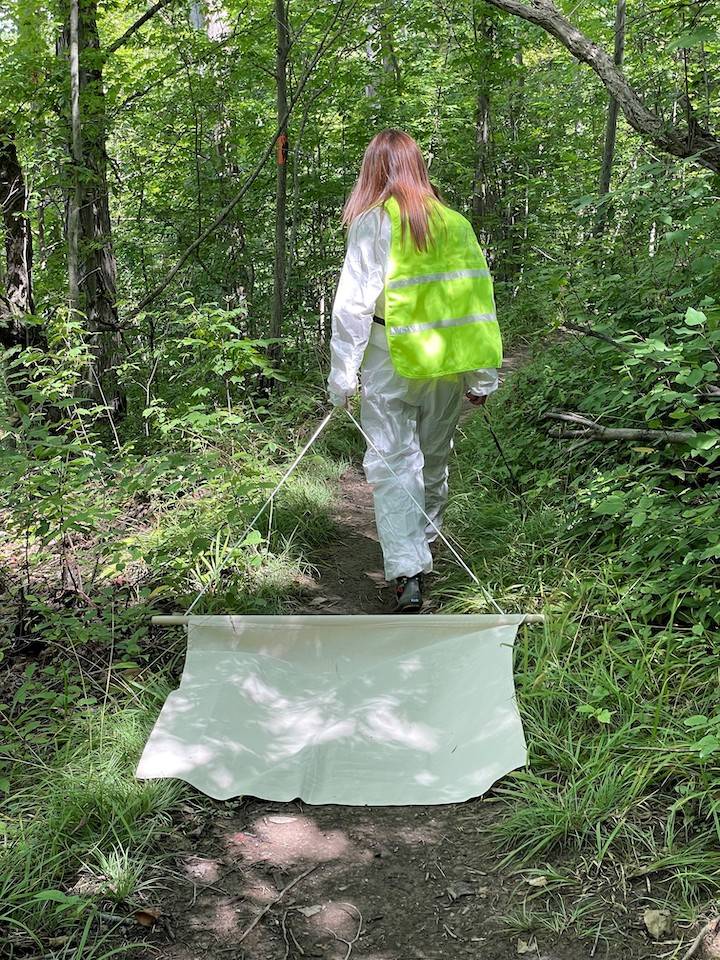
Press Release:
The Genesee and Orleans County Health Departments (GO Health) encourage residents to protect themselves, their children, and their pets from tick-borne diseases. Not all ticks can cause disease and not all bites will make you sick, but as ticks become more widespread, there is a higher risk the ticks will carry disease.
It is important to learn how to prevent a bite, how to check for ticks, how to remove a tick, and what to do if you think you could have a tick-borne disease.
“Lyme disease is endemic (widespread) throughout New York State,” states Brenden Bedard, Director of Community Health Services for GO Health. “Lyme disease is also the most common disease spread by ticks in New York, but there are other serious diseases ticks spread including Anaplasmosis, Ehrlichiosis, Babesiosis, and Rocky Mountain Spotted Fever. There are many different species of ticks, but locally the most common is the deer tick. The deer tick is a vector (carrier) for several diseases (Lyme disease, Babesiosis, Anaplasmosis) and received the name because of its habit of living and feeding on white-tailed deer, however, ticks acquire Lyme disease by feeding on infected mice and other small rodents,” stated Bedard.
“According to the New York State Department of Health Bureau of Communicable Disease Control, Genesee and Orleans Counties have had 36 local cases of Lyme disease between 2018-2020,” stated Paul Pettit, Public Health Director for GO Health. “Ticks are here locally and you can’t tell which are infected by disease or not.”
Ticks are found in many types of settings such as woodlands, tree stumps, lawns and gardens, around stone walls, nature trails, outdoor summer camps, and playing fields. Ticks do not jump or fly, they attach to their host when a human or animal makes contact with something that a tick is on, like tall grass, shrubs, or an animal. The risk of human infection with Lyme disease is greatest in late spring and summer, but ticks can be active any time the temperature is above freezing.
“We know the ticks that cause Lyme disease are in Western New York, that is why it is so important to make sure you do regular checks for ticks while outdoors and when you first get home,” said Pettit. “It is also important to check pets for ticks after they spend time outdoors.”
GO Health started conducting local tick surveillance in both counties this month. Tick dragging is a widely used technique for the active collection of host-seeking ticks and is done by dragging a cloth over the top of vegetation and regularly checking it for the presence of ticks. The collected ticks are sent to the laboratory and tested for the presence of tick-borne diseases. Over the next few months, health department staff will continue tick dragging in local parks and public places.
To prevent tick-borne illness exposure while outdoors, you and your family can do the following: (https://www.health.ny.gov/diseases/communicable/lyme/)
- Wear light-colored clothing with a tight weave to spot ticks easily.
- Wear enclosed shoes, long pants and a long-sleeved shirt. Tuck pant legs into socks or boots and shirt into pants.
- Check clothes and any exposed skin frequently while outdoors.
- Use insect repellent with 20-30% DEET. Follow the instructions.
- Stay on cleared, well-traveled trails. Avoid dense woods and busy areas.
- Avoid sitting directly on the ground or on stone walls.
- Keep long hair tied back, especially when gardening.
- Bathe or shower as soon as possible after going indoors (preferably within two hours) to wash off and more easily find ticks that may be on you.
- Do a final, full-body tick check at the end of the day (also check children and pets), and remove ticks promptly.
Additional prevention tips to create a tick-free zone in your backyard to keep you, your family, and pets safe from tick exposure include: (https://www.health.ny.gov/publications/2825/)
- Keep grass mowed, along with clearing tall grasses and brush.
- Remove brush and leaves around stonewalls and woodpiles.
- Keep woodpiles and bird feeders away from your home.
- Keep family dogs and cats out of wooded areas to reduce ticks brought into your home.
- Place swing sets, sand boxes, decks and patios in a sunny spot away from yard edges and trees.
- Place a 3 foot wide barrier of wood chips or gravel between lawns and wooded areas and around patios and play equipment.
To properly remove a tick, you should use fine-tipped tweezers to grasp the ticks by its mouthparts, as close to the surface of the skin as you can. Carefully pull the tick straight up without twisting. Do not touch the tick. Do not squeeze the body of the tick (it may increase your risk of infection). Clean your hands and the areas on your skin where the tick was. Watch the site of the bite for rash (3-30 days after bite).
Removing a tick within 36 hours of attachment to the skin can lower the risk of contracting Lyme disease. You can view the following video to learn more about what you can do if you find a tick attached to you: https://youtu.be/oGrK4ZKUfhQ.
To learn more about ticks, Lyme disease and other diseases ticks can spread visit the New York State Department of Health, https://www.health.ny.gov/diseases/communicable/lyme/.
For more information on Health Department programs and services, visit GOHealthNY.org or call your respective health department at:
- Genesee County: 585-344-2580 ext. 5555
- Orleans County: 585-589-3278
Follow GO Health on Facebook, Twitter and Instagram at GOHealthNY.
